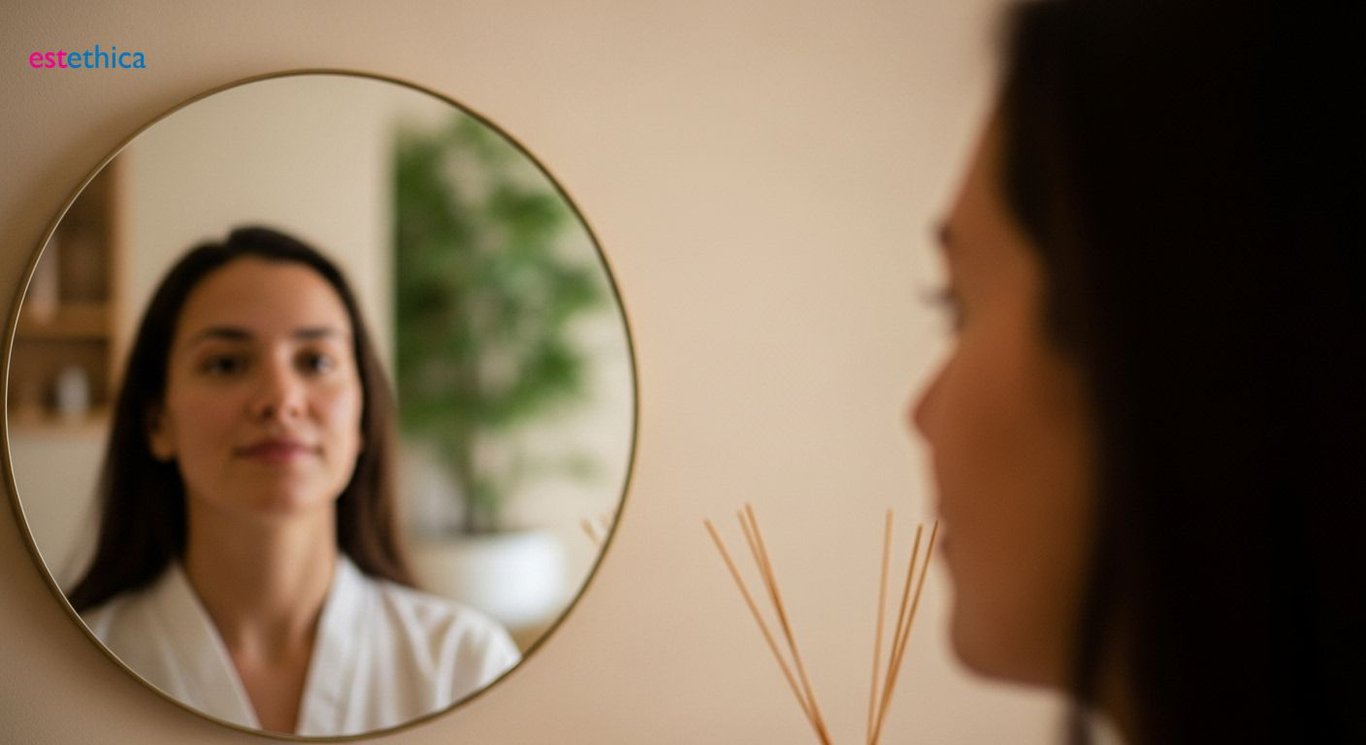Rhinoplasty Unveiled: Reshape Your Nose, Reimagine Yourself
Transform your appearance and breathe easier with rhinoplasty. Understand how estethica's expertise can aid your makeover.
Rhinoplasty has transcended beyond just being a cosmetic procedure. It is a journey to rediscover oneself, both aesthetically and functionally. At estethica, we delve into the intricacies of this transformative process, bringing together expert insights and patient experiences to offer you a comprehensive guide to rhinoplasty and its multifaceted benefits.
Understanding Rhinoplasty: More Than Just a Nose Job
The Functional Benefits of Rhinoplasty
Beyond cosmetic improvements, rhinoplasty can significantly enhance nasal function. Correcting structural issues like a deviated septum can alleviate chronic congestion and improve breathing. In fact, about 60% of people who undergo rhinoplasty report noticeable improvements in their breathing capabilities post-surgery. This aspect of nose surgery is vital for individuals experiencing respiratory difficulties.
The procedure can also address nasal valve collapse, a condition where the nasal passages narrow, restricting airflow. By reinforcing the nasal structure, rhinoplasty ensures better airflow. Moreover, some individuals opt for a combined rhinoplasty and septoplasty to simultaneously refine the nose's appearance and correct internal structural problems contributing to breathing impairments. This dual approach results in both aesthetic satisfaction and functional relief. For example, a patient who has difficulty breathing through their nose may also want to correct asymmetrical nostrils.
Factors Affecting Rhinoplasty Decisions
- Individual Goals: Each patient has unique ideas concerning nose shape and functionality, which shapes the entire surgical plan.
- Nasal Structure: The inherent structure of the nose impacts the possibilities and restrictions of the nose job, impacting the picked techniques.
- Health Factors: Overall health and any present nasal problems might impact the surgical strategy and healing process.
Deciding on rhinoplasty includes a comprehensive evaluation of one's objectives, existing nasal shape, and overall health. For instance, someone seeking a less noticeable nose might choose non-surgical options like liquid rhinoplasty. A consultation with a rhinoplasty surgeon will provide clarity on what type of procedure is best suited. This includes assessing whether the primary focus is on aesthetic enhancement or functional correction like septoplasty.

Open vs Closed Rhinoplasty: Which Technique is Right for You?
Ideal Candidates for Open vs. Closed Rhinoplasty
The choice between open and closed rhinoplasty often depends on the extent of surgical modifications needed and the patient's specific anatomical considerations. Open rhinoplasty is typically recommended for individuals requiring significant nasal reshaping, such as correcting a severely deviated septum or addressing complex nasal asymmetries. This method provides the surgeon with enhanced visibility and access to the underlying structures, facilitating precise alterations.
Closed rhinoplasty, on the other hand, is more suitable for patients seeking minor adjustments, like refining the nasal tip or reducing a small dorsal hump. Because this technique is performed through the nostrils, it results in no external scarring and often involves a quicker rhinoplasty recovery time. For instance, a person wanting a slight refinement of their nasal bridge might be an excellent candidate for closed rhinoplasty. The approach is also generally favored for first-time nose surgery patients who do not have significant functional problems.
Key Factors Influencing Technique Selection
- Complexity of Correction: Open rhinoplasty is favored for complex reshaping, offering superior access.
- Scarring Concerns: Closed rhinoplasty is ideal for minimizing visible scars through internal incisions.
- Recovery Expectations: Closed rhinoplasty typically results in a shorter recovery.

Rhinoplasty Recovery Time: What to Expect, Step by Step
Navigating the Initial Days Post-Rhinoplasty
Rhinoplasty recovery starts immediately after the surgery, with the first few days being the most critical. Patients typically experience swelling and bruising around the eyes and nose, which is a normal part of the healing process. In fact, applying cold compresses during the first 72 hours can reduce swelling by up to 30%. Regular follow-ups with estethica ensure that any concerns are promptly addressed, contributing to a smoother and more comfortable recovery.
Rest and limited physical activity are essential during the initial recovery period. It's advisable to keep the head elevated, even while sleeping, to minimize swelling. For example, using extra pillows to keep the head raised can significantly aid in reducing post-operative edema. Additionally, avoiding strenuous activities like heavy lifting or intense workouts is crucial, as these can increase blood pressure and exacerbate swelling. estethica provides detailed post-operative instructions, including guidelines on medication, wound care, and activity restrictions, to help patients achieve optimal healing.
Essential Steps for a Smooth Rhinoplasty Recovery
- Cold Compresses: Apply regularly for the first 72 hours to minimize swelling.
- Head Elevation: Keep your head elevated to reduce edema and discomfort.
- Gentle Cleansing: Follow estethica's instructions for cleaning the incision areas.

Beyond Aesthetics: Rhinoplasty for Breathing and Septoplasty
Correcting Breathing Issues with Rhinoplasty
Rhinoplasty offers more than just aesthetic enhancements; it can significantly improve nasal function. A common issue, a deviated septum, can obstruct airflow and lead to breathing difficulties. A septoplasty, often performed in conjunction with a nose job, corrects this deviation, opening up the nasal passages for easier breathing. Around 70% of patients who undergo a combined rhinoplasty and septoplasty report significant improvements in their breathing.
Combining rhinoplasty with septoplasty can address various functional problems such as chronic sinusitis, sleep apnea, and persistent nasal congestion. A crooked septum can lead to uneven airflow, causing one nostril to work harder than the other, resulting in discomfort and potential health issues. For instance, someone with a severely deviated septum might experience frequent nosebleeds and headaches. This integrated procedure not only enhances the nose's appearance but also promotes better respiratory health. The expert rhinoplasty surgeon at estethica assesses each patient individually to determine the best approach for their specific needs.
Benefits of Addressing Functional Issues
- Improved Breathing: Correcting structural issues leads to better airflow and reduced congestion.
- Enhanced Sleep Quality: Addressing breathing problems can alleviate sleep apnea symptoms.
- Reduced Sinus Issues: Correcting a deviated septum can lessen the frequency of sinus infections.
The Ideal Candidate for Rhinoplasty
Essential Qualities of a Rhinoplasty Candidate
Ideal candidates for rhinoplasty are those seeking improvement in nasal appearance and function. It's vital for candidates to have realistic expectations and be in good health. A consultation with a skilled rhinoplasty surgeon at estethica is crucial to understanding the possibilities and limitations of the surgery. For example, patients looking to correct breathing difficulties alongside reshaping should discuss this thoroughly during their consultation. Around 85% of patients who seek nose surgery have a clear vision of the aesthetic outcome they desire.
Good candidates should also be non-smokers or willing to quit before and after the procedure, as smoking can impede the healing process. Individuals with a history of unrealistic expectations from cosmetic procedures may not be suitable candidates without careful counseling. Understanding the potential outcomes, with the help of advanced imaging technology available at estethica, ensures patients are well-informed. For instance, a person with thick nasal skin needs to understand that the achievable refinement might be limited compared to someone with thinner skin. A thorough evaluation helps determine if rhinoplasty aligns with the patient's aesthetic goals.
Steps to Determine Rhinoplasty Candidacy
- Comprehensive Consultation: Discuss your goals and concerns with an estethica surgeon.
- Health Evaluation: Undergo a thorough medical assessment to ensure you are fit for surgery.
- Realistic Expectations: Understand the potential outcomes and limitations of the procedure.
Choosing the Right Surgeon: What to Consider
Evaluating Surgeon Credentials and Expertise
Selecting the right rhinoplasty surgeon is a pivotal step towards achieving desired outcomes. It’s crucial to assess their qualifications, board certifications, and specific experience in performing nose surgery. A surgeon's portfolio, including before-and-after photos, provides insight into their aesthetic style and surgical precision. estethica prides itself on housing experienced surgeons adept in advanced rhinoplasty techniques who are committed to tailoring each procedure to the individual's anatomy and aesthetic goals.
Moreover, patient reviews and testimonials can offer valuable perspectives on the surgeon’s bedside manner, attentiveness, and overall patient satisfaction. For example, a surgeon known for clear communication and thorough pre-operative consultations is more likely to build trust and ensure patient comfort. At estethica, our surgeons use state-of-the-art technology, ensuring precise results and patient satisfaction with their nasal reshaping. This commitment ensures safety and efficacy, providing patients with the best possible care. Investigating a surgeon’s use of modern techniques can provide an additional layer of assurance.
Critical Factors in Surgeon Selection
- Qualifications: Verify board certifications and specialized training in nose surgery.
- Experience: Assess the surgeon’s track record with a variety of rhinoplasty cases.
- Patient Feedback: Look for consistent positive reviews regarding care and results.
Understanding Rhinoplasty: A Comprehensive Guide
Precision Nasal Reshaping with Open and Closed Rhinoplasty Techniques
Comprehensive Rhinoplasty Recovery Support with Detailed Step-by-Step Guidance
Frequently Asked Questions
What are the functional benefits of rhinoplasty beyond aesthetics?
What is the typical rhinoplasty recovery time, and what should I expect during the initial days?
How do I determine if I am an ideal candidate for a nose job?
What key factors should I consider when choosing a rhinoplasty surgeon?
Ready for a healthier, more beautiful you? Discover personalized esthetic solutions today.
📞 Call Now for Your Free Consultation!